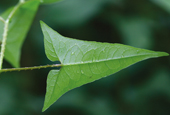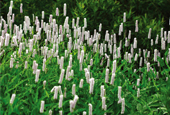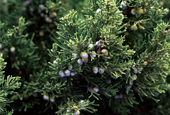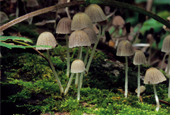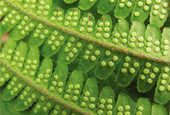View this article in another language
- 한국어
- English
- 日本語
- 中文
- العربية
- Español
- Français
- Deutsch
- Pусский
- Tiếng Việt
- Indonesian
Flora & Fauna of Korea #13
Korea.net publishes a series of articles, “Nature You Meet in the Mountains,” about the peninsula’s mushrooms, insects, trees and herbs & flowers.
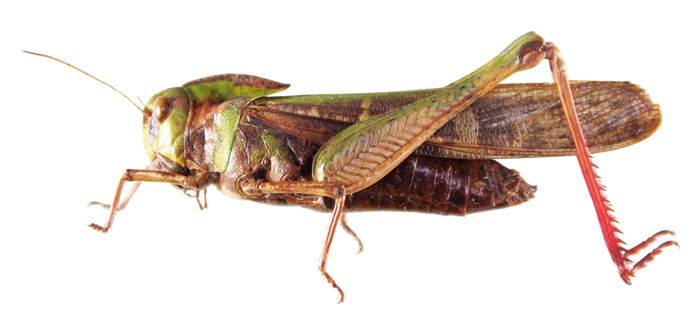
Insects
Name: 콩중이 Kongjungi
Scientific name: Gastrimargus marmoratus (Thunberg)
Distribution: Korea, Japan, Taiwan
This grasshopper has a body size of 40 to 57 millimeters and comes in dark green or black brown. The green is darker on those specimens that live in the grass. The vertex is wide, round and has a sharp ridge that stretches along on the back. The prothorax is long and the shoulders are high. The front of the head sticks out slightly higher than the pointed cowl at the back of the head.
The forewings are mostly black or brown, except on the backside which is dark green. There are two gray stripes along the wings. Females have a variety of colors and patterns. There are black-brown stripes along the center of the rear wings. The underside of the wings is yellow and the outer parts are relatively darker. The segments of the hind legs are red and have vague ring-streaked patterns on the underside.
Ecology: This grasshopper inhabits the fields, the edge of forests and grasslands. They are known to eat beans and sprouts.
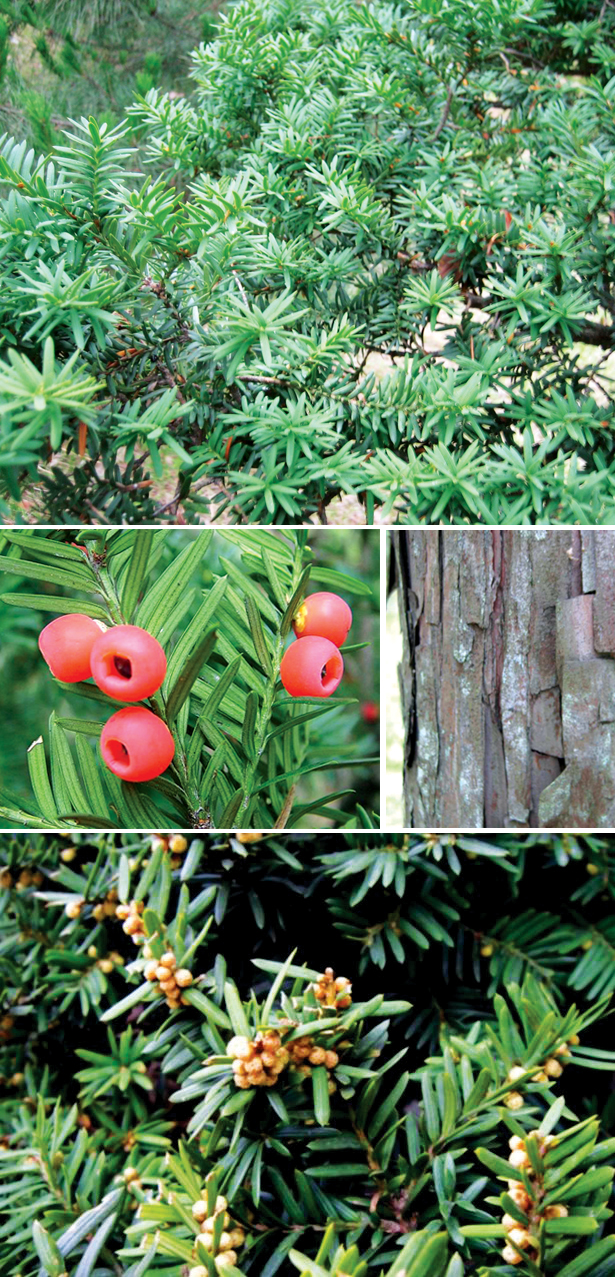
Trees
Name: 주목 Jumok
Scientific name: Taxus cuspidata Siebold & Zucc.
Type: evergreen with needles
Blooming season: April
Bearing season: August to September
Distribution: Mountain ranges across the peninsula
This tree is normally found in Korea’s Baekdudaegan mountains, the mountain ridge that runs the length of the peninsula. It grows to a height of 17 meters and is about one meter in diameter. For the bark, the branches and stems are reddish-brown while the tender shoots are green. The leaves are arranged in a spiral shape. Those grown from trailing branches are dark green, have a pointy end and two light-orange lines are found on the backside. This dioecious tree gives bloom to a male flower with six squamas and to a female flower with ten squamas. It bears a red fruit, surrounded with a cup-shaped cover.
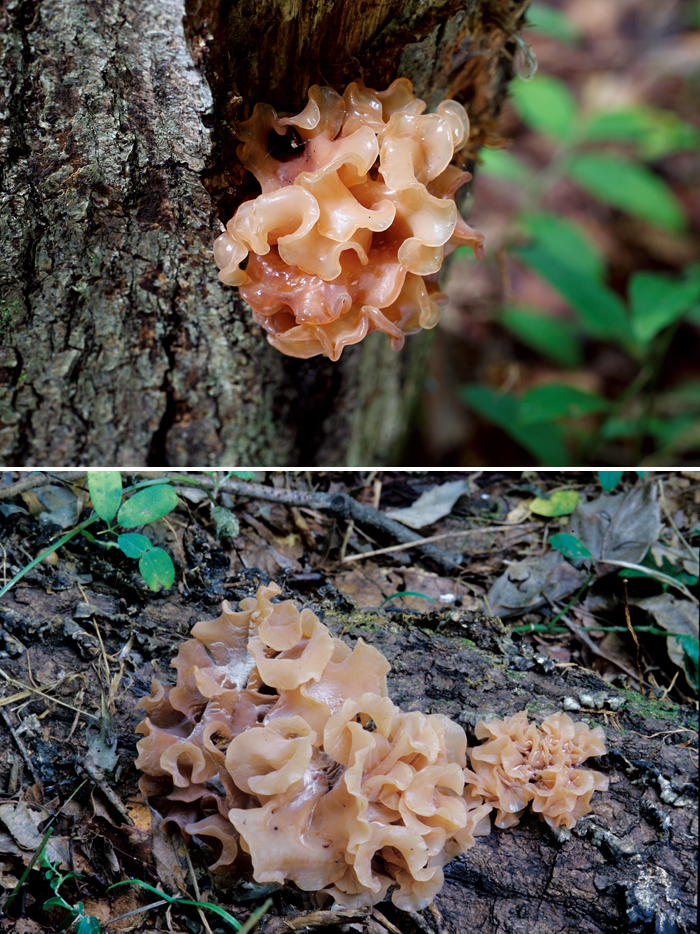
Mushrooms
Name: 꽃흰목이 Ggothinmogi
Scientific name: Tremella foliacea Pers.
Type: saprophile spore
Print: white
Edible
This fungus grows on the stems and branches of fallen and dead broad-leaved trees. The petal-shaped spores develop in an overlapped pattern, making it look like a bouquet. The individual threads of fungus are about 10 centimeters in diameter and 6 centimeters high. This gelatin mushroom ranges from light-brown to reddish-brown in color. The hymenium appears on the overall surface. The basal consists of a solid chondrin, or cartilage.
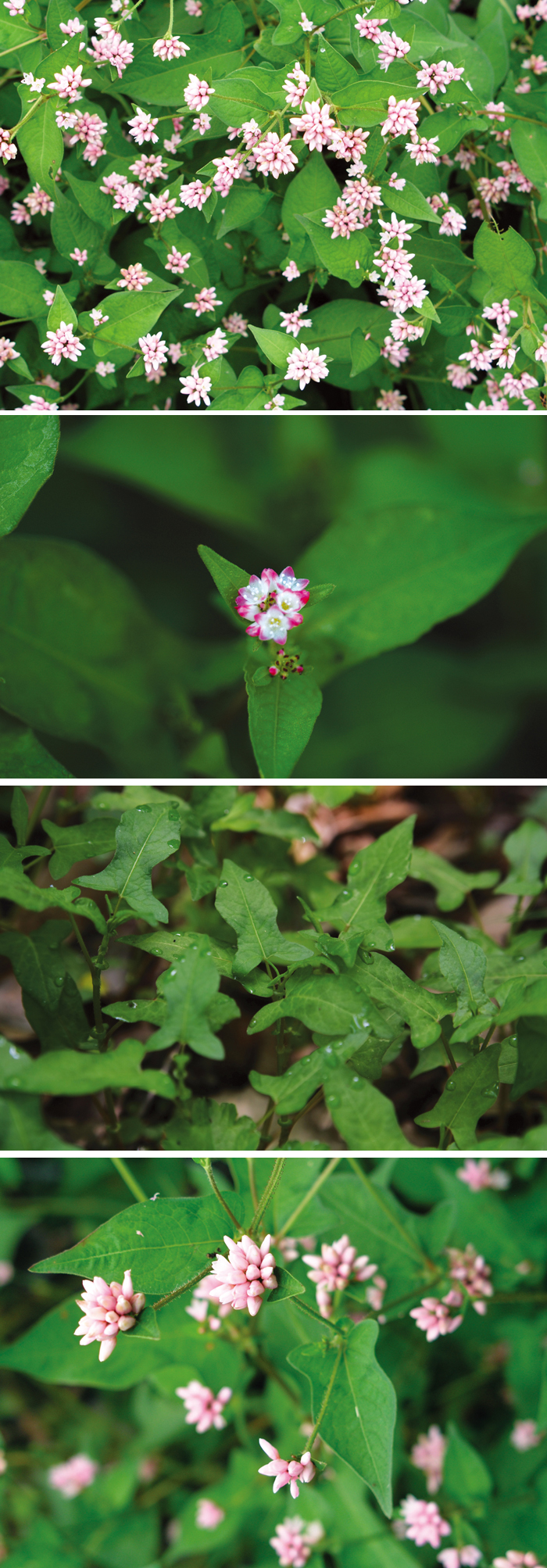
Herbs & Flowers
Name: 고마리 Gomari
Scientific name: Persicaria thunbergii (Siebold & Zucc.) H. Gross ex Nakai
Blooming season: August to September
Bearing season: October to November
Distribution: mountains nationwide
This climbing vine blooms annually and normally grows from 50 to 100 centimeters in length. Its favored habitats are in fields and along the waterside. The alternating leaves form an isosceles triangle and have wing-like features on the stalk. The flowers are light pink or white. It is a capitulum, meaning that it gives bloom to a flower of ten compact clusters at the tip of its branches. The achene fruit form a yellowish-brown elongated oval with no gloss on the surface.
*This series of article about Korea’s insects, trees, mushrooms and herbs & flowers has been made possible through the cooperation of the Korea National Arboretum.
Korea.net publishes a series of articles, “Nature You Meet in the Mountains,” about the peninsula’s mushrooms, insects, trees and herbs & flowers.

Insects
Name: 콩중이 Kongjungi
Scientific name: Gastrimargus marmoratus (Thunberg)
Distribution: Korea, Japan, Taiwan
This grasshopper has a body size of 40 to 57 millimeters and comes in dark green or black brown. The green is darker on those specimens that live in the grass. The vertex is wide, round and has a sharp ridge that stretches along on the back. The prothorax is long and the shoulders are high. The front of the head sticks out slightly higher than the pointed cowl at the back of the head.
The forewings are mostly black or brown, except on the backside which is dark green. There are two gray stripes along the wings. Females have a variety of colors and patterns. There are black-brown stripes along the center of the rear wings. The underside of the wings is yellow and the outer parts are relatively darker. The segments of the hind legs are red and have vague ring-streaked patterns on the underside.
Ecology: This grasshopper inhabits the fields, the edge of forests and grasslands. They are known to eat beans and sprouts.

Trees
Name: 주목 Jumok
Scientific name: Taxus cuspidata Siebold & Zucc.
Type: evergreen with needles
Blooming season: April
Bearing season: August to September
Distribution: Mountain ranges across the peninsula
This tree is normally found in Korea’s Baekdudaegan mountains, the mountain ridge that runs the length of the peninsula. It grows to a height of 17 meters and is about one meter in diameter. For the bark, the branches and stems are reddish-brown while the tender shoots are green. The leaves are arranged in a spiral shape. Those grown from trailing branches are dark green, have a pointy end and two light-orange lines are found on the backside. This dioecious tree gives bloom to a male flower with six squamas and to a female flower with ten squamas. It bears a red fruit, surrounded with a cup-shaped cover.

Mushrooms
Name: 꽃흰목이 Ggothinmogi
Scientific name: Tremella foliacea Pers.
Type: saprophile spore
Print: white
Edible
This fungus grows on the stems and branches of fallen and dead broad-leaved trees. The petal-shaped spores develop in an overlapped pattern, making it look like a bouquet. The individual threads of fungus are about 10 centimeters in diameter and 6 centimeters high. This gelatin mushroom ranges from light-brown to reddish-brown in color. The hymenium appears on the overall surface. The basal consists of a solid chondrin, or cartilage.

Herbs & Flowers
Name: 고마리 Gomari
Scientific name: Persicaria thunbergii (Siebold & Zucc.) H. Gross ex Nakai
Blooming season: August to September
Bearing season: October to November
Distribution: mountains nationwide
This climbing vine blooms annually and normally grows from 50 to 100 centimeters in length. Its favored habitats are in fields and along the waterside. The alternating leaves form an isosceles triangle and have wing-like features on the stalk. The flowers are light pink or white. It is a capitulum, meaning that it gives bloom to a flower of ten compact clusters at the tip of its branches. The achene fruit form a yellowish-brown elongated oval with no gloss on the surface.
*This series of article about Korea’s insects, trees, mushrooms and herbs & flowers has been made possible through the cooperation of the Korea National Arboretum.
